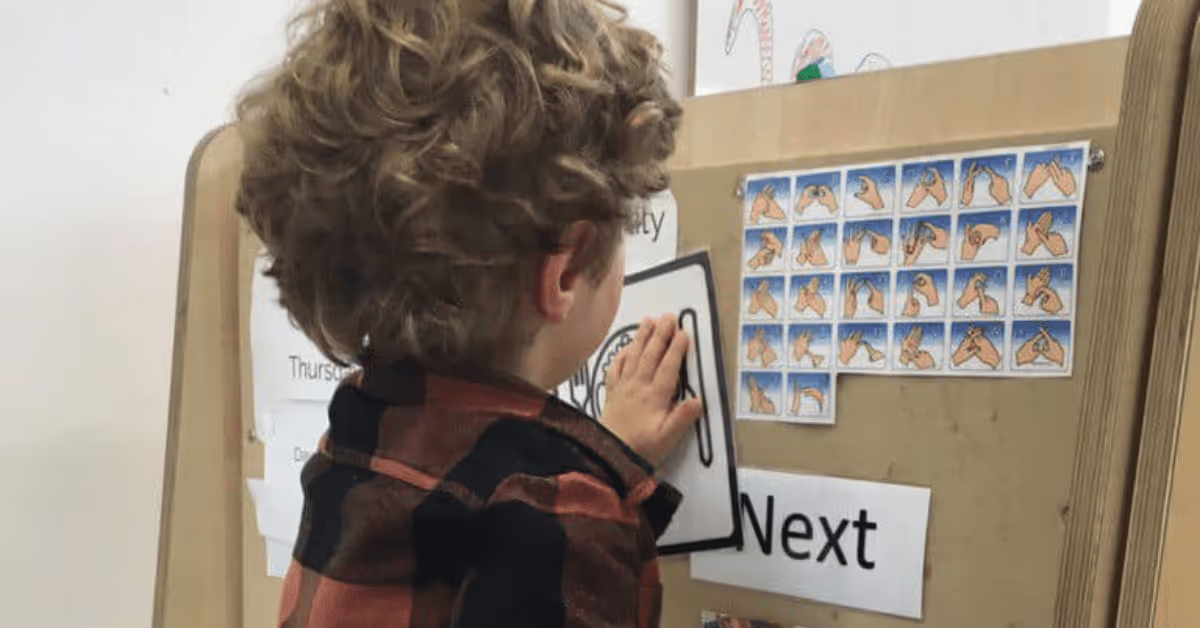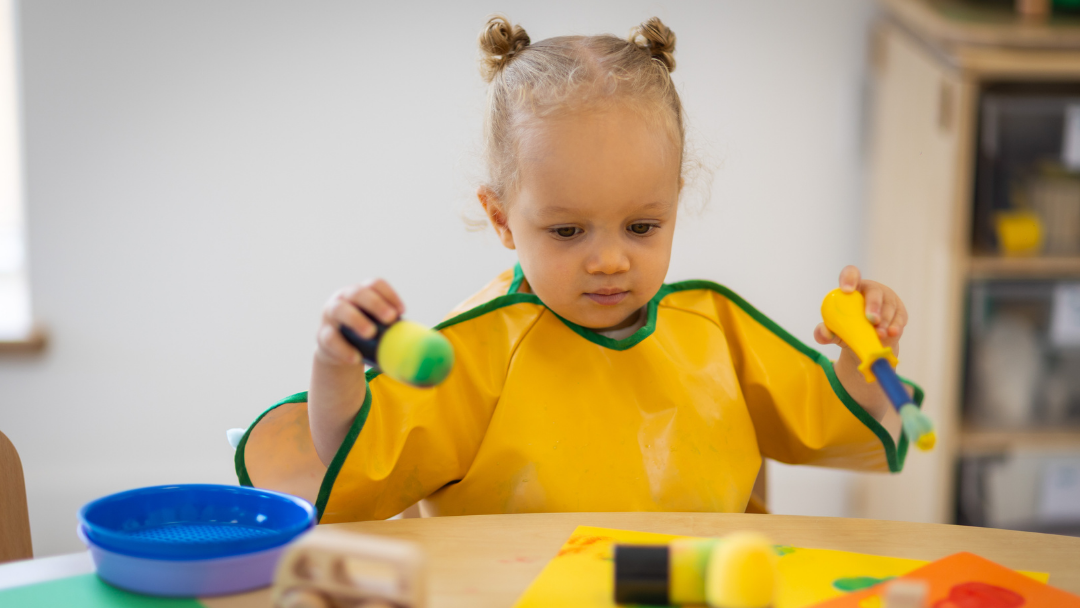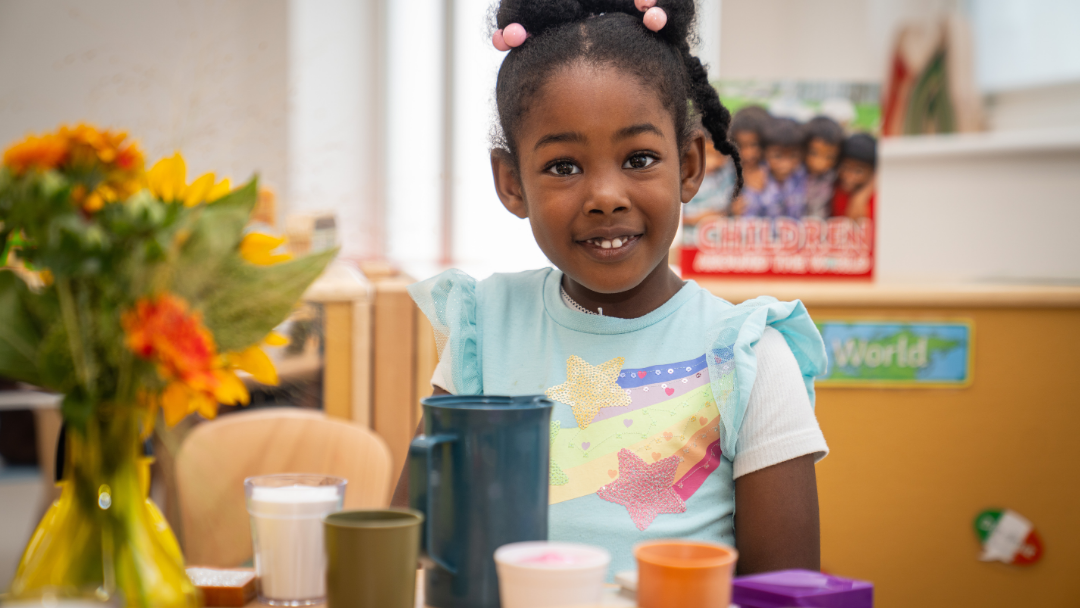Fennies Head of EYFS, Rageena Tahir, shares how to create outstanding child-led nursery displays to enhance your early years setting.

Nursery displays in early years rooms can help make your learning environment inviting, stimulating and visually engaging. This can have a profound effect on children's development and support several areas of learning. However, just as displays can enhance your settings, they can also be counterproductive by being too overstimulating and not child-led. This is something I have seen time and time again across early years settings.There's a fine line between the two and in this blog post, I will share the importance of involving children in your displays as well as my top tips for creating outstanding display ideas.
What's the problem with early years displays?
As someone who's worked in the early years for over 11 years, I've seen a lot of displays! One of the main problems I've noticed is that often these displays are set at adult height, filled with quotes from guidance documents and are incredibly polished. If this is the case, ask yourself, who is this display for? Parents? Who very rarely spend much time in the nursery rooms. Ofsted? Who has explicitly stated that they don't need to see paper evidence of learning that happened last week or last month? If you answer 'yes' to any of the above, your display probably isn't child-led.Another problem is that staff working in early years can spend a lot of time creating displays with the goal of them being perfect. This can be incredibly time-consuming, taking away valuable moments that could be spent focusing on the children where learning can actually be happening. Not to mention the number of trees being cut down to serve the excessive use of backing papers and borders and the dreaded plastics of laminating everything that goes up, which will eventually end up in the bins and in the oceans.
Why is a child-led display important?
So, what's the point in display boards, and how do you make sure your boards facilitate child-led learning?Reasons for displays in early years settings are many and varied. Your boards will reflect quite openly the overall ethos of your nursery or preschool as well as display children's current interests.At Fennies, we don't actually have traditional boards in our nursery rooms. Instead, to ensure our environments remain current, we have live boards to promote self-esteem where children can head over and display their masterpieces themselves as they complete them.So, how do you make sure your display encourages child-led learning? Here are some tips you can use when creating nursery displays:
Show the journey
An effective board will be full of examples of children's work and show the journey of how they got there and what was learnt along the way. Start with the 'why', and this should be directly linked to a child's interest. For example, Hasan brought in his favourite book about space and all the children were intrigued.

Your display board should then show how you took that interest and implemented it into your provision, providing activities and experiences across all areas of learning that taught children new concepts and vocabulary. For example, your board could include pictures of children's work and photos of their engagement in a variety of experiences around that particular interest.
Location, location, location
Your displays should be at child height to enable and encourage children to help create and interact with them. Having them at child height means that they will regularly see the displays, which encourages them to discuss the topic the board is centred around.
Substance over style
Worry less about the design of your displays and think more about how children want to see them. Remember, showing learning is much more important than making them look pretty, and there are many ways you can present your displays.

You may want to incorporate guide sequencing here. Guide sequencing starts with the point you started and shows we did this and then this etc. For example, you may have begun by reading 'The Very Hungry Caterpillar,' this may have then lead onto learning about the lifecycle of a caterpillar and also which foods keep us healthy.This demonstrates the whole process of learning from start to finish. Or you may want your display to be more random and show all of the things the children learned but in no particular order.
Simplicity is key
However you decide to present your displays, try not to make them too busy. Every single piece on the board should be relevant and meaningful. When display boards become too cluttered, this can cause overstimulation for children and be counterproductive.It's important to remember that you don't have to put up information about every single part of the topic. But, where possible, do make sure there is something that is a representation of each child — you don't want anyone to be excluded.

Actively involve children
Do your display boards purely make your nursery room look good? Or do you actively display not just the products of the children’s imaginative learning but the processes too? Being faced with an expanse of blank display space can sometimes prove daunting — as can limited display space — but considering children's learning and development goals and placing this at the centre of whatever you create should always be your starting point.With a little bit of thought, your display areas, whatever their extent, can become a valuable, interactive part of the learning process.
How long should a display stay up?
So, you've created a wonderful child-led display that presents engaging information about recent learning that's taken place in your nursery room. But how long should it stay up for? Well, why not ask the children? It seems simple, but why not find out if they are still interested in the display board by asking them?You should also bear in mind the following; do they still interact with it? Is it still relevant? If your answer is ‘no’ to any of these questions, chances are it's probably time to switch things up. There also may be a new interest that has taken over the room that would now be better placed on the board.

If you're stuck for ideas, use these existing interests as a starting point. It can also be fun when involving children to create the displays as they feel as though they have an input on their environment as well.I also always advise you to move away from the idea of scheduling monthly board changes. Children's interests may only last 2 weeks, but they could go on for 6. Tune in to your children to really see what is happening. Only then are your environments really child-led.
How do displays encourage children to learn?
Displays offer so much more than meets the eye. When done correctly, they have the power to promote independence, self-confidence and language and literacy skills in early years settings.Children should have a say when it comes to their environment. Giving them a voice encourages effective decision making, creativity and independence skills, which are crucial for their learning and development. Actively involving children in the creation of displays in their nursery room can be a great starting point for this and they are also more likely to interact with the display too.

Including examples of children's work is another great way to involve them when creating your displays. This celebrates their achievements and boosts self-confidence when they are given the opportunity to hang their masterpiece on full display. Let them choose what pieces of work they are most proud of and that they want to display to make your boards truly child-led.You can also include their artwork, photographs of them engaging in activities, pictures of their family members and real-life images. It's a good idea to label these images as labels are a great way of introducing new vocabulary that they will become familiar with seeing every day. Using quotes from the children, keywords, and small snippets of text can help children attribute meanings to words creating a language-rich environment.I will say though, it's important not to go too overboard with labelling, as you don't way your displays to be too overstimulating or distracting.
Checklist for creating displays:
When the time comes for you to consider your physical learning environment, here's the main things that I recommend bearing in mind to ensure your displays are child-led, encourage learning and actively involve children.Make sure you are identifying a child's specific interest that can be shared with all the children in the roomMake sure you are providing engaging experiences for children in line with the interest through your displaysTaking photos of their engagement and using these within your displays to actively involve childrenWriting quotes of conversations that support a language rich environment and celebrate the child's voiceAs children complete work, let them decide which pieces go up to promote self-confidence and the decision-making processesCollating photos, quotes, and work and display at child height for optimum interactionInvolving children in putting the display up can encourage children by making them feel as though they have a voice regarding their environment
To conclude...
Display boards are just a small part of an enabling environment but they are great for supporting child-led learning. When your boards incorporate children's interests and achievements, their voices are being reflected in their surroundings promoting effective learning and development.
FAQ
Subscribe to our newsletter
Stay up to date with Fennies news






.png)



